Python Exercise: Slice a tuple
Python tuple: Exercise-13 with Solution
Write a Python program to slice a tuple.
Sample Solution:-
Python Code:
#create a tuple
tuplex = (2, 4, 3, 5, 4, 6, 7, 8, 6, 1)
#used tuple[start:stop] the start index is inclusive and the stop index
_slice = tuplex[3:5]
#is exclusive
print(_slice)
#if the start index isn't defined, is taken from the beg inning of the tuple
_slice = tuplex[:6]
print(_slice)
#if the end index isn't defined, is taken until the end of the tuple
_slice = tuplex[5:]
print(_slice)
#if neither is defined, returns the full tuple
_slice = tuplex[:]
print(_slice)
#The indexes can be defined with negative values
_slice = tuplex[-8:-4]
print(_slice)
#create another tuple
tuplex = tuple("HELLO WORLD")
print(tuplex)
#step specify an increment between the elements to cut of the tuple
#tuple[start:stop:step]
_slice = tuplex[2:9:2]
print(_slice)
#returns a tuple with a jump every 3 items
_slice = tuplex[::4]
print(_slice)
#when step is negative the jump is made back
_slice = tuplex[9:2:-4]
print(_slice)
Sample Output:
(5, 4)
(2, 4, 3, 5, 4, 6)
(6, 7, 8, 6, 1)
(2, 4, 3, 5, 4, 6, 7, 8, 6, 1)
(3, 5, 4, 6)
('H', 'E', 'L', 'L', 'O', ' ', 'W', 'O', 'R', 'L', 'D')
('L', 'O', 'W', 'R')
('H', 'O', 'R')
('L', ' ')
Pictorial Presentation:
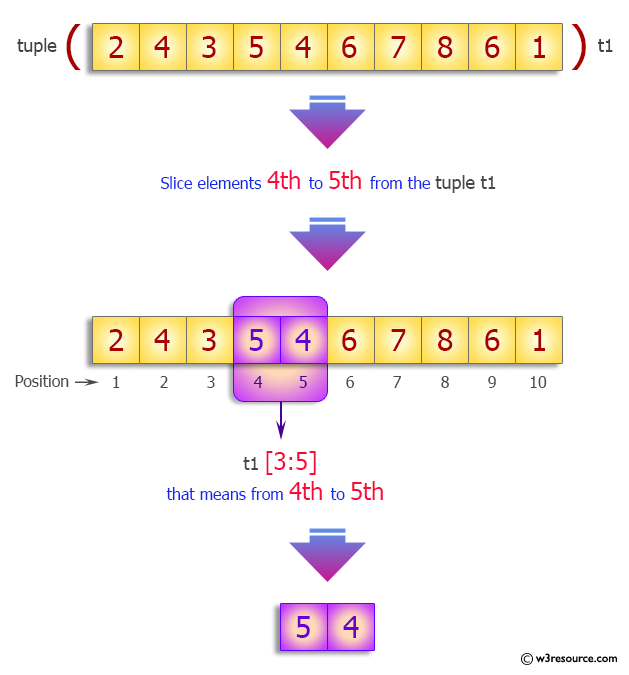
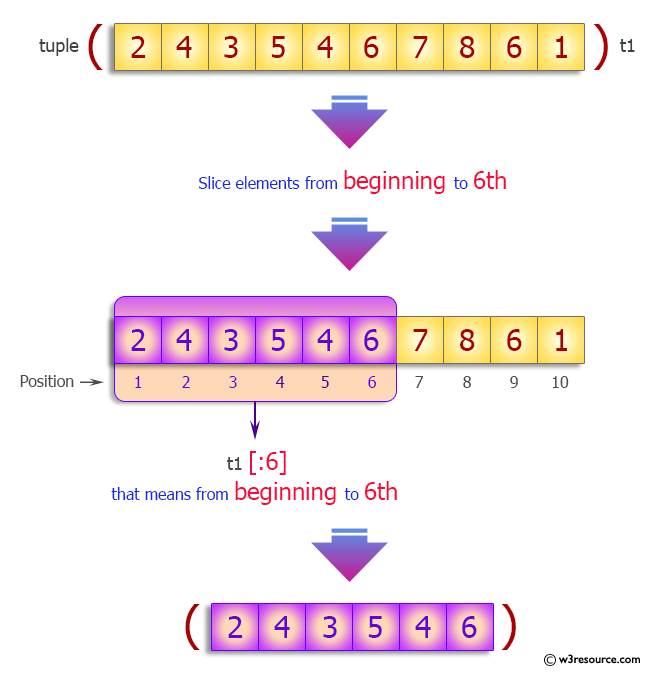
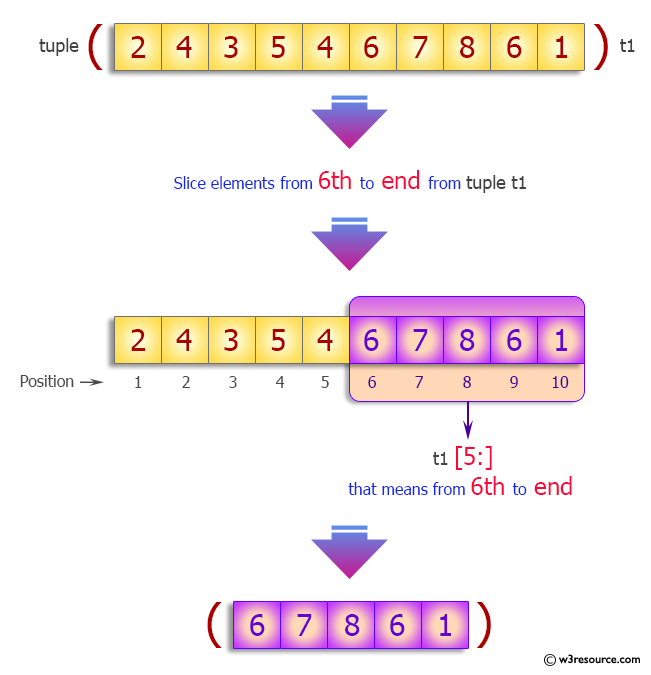
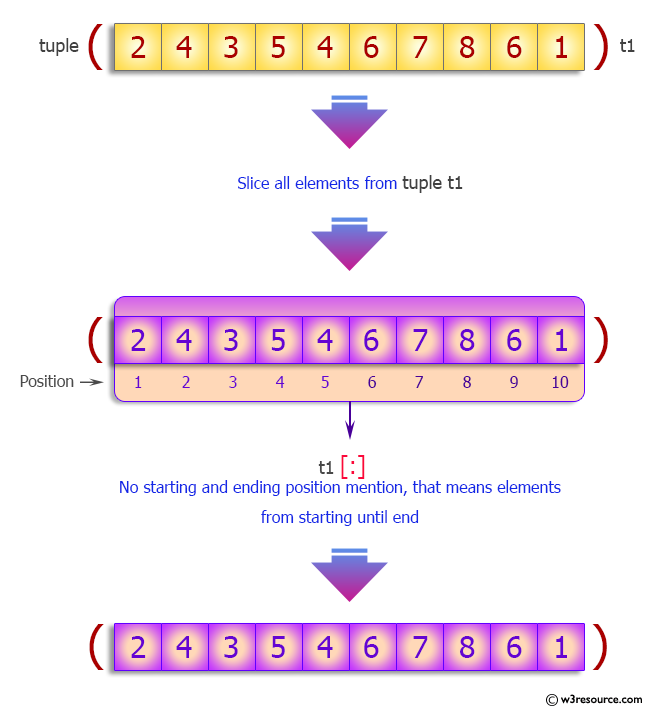
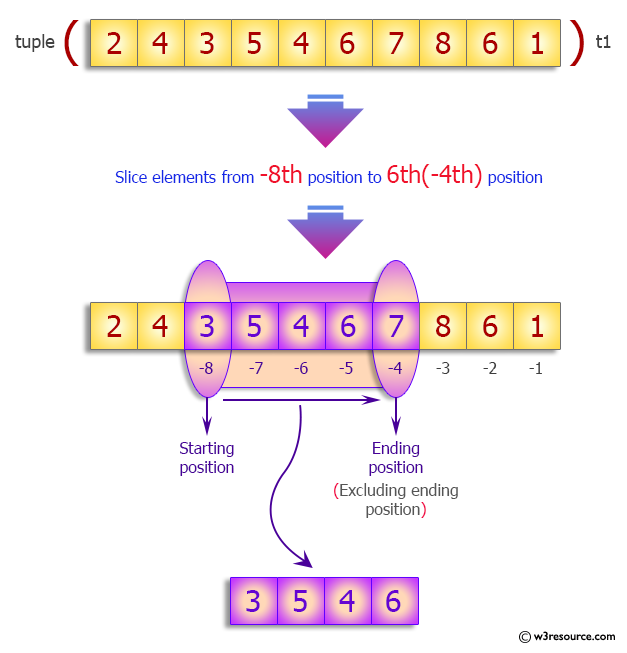
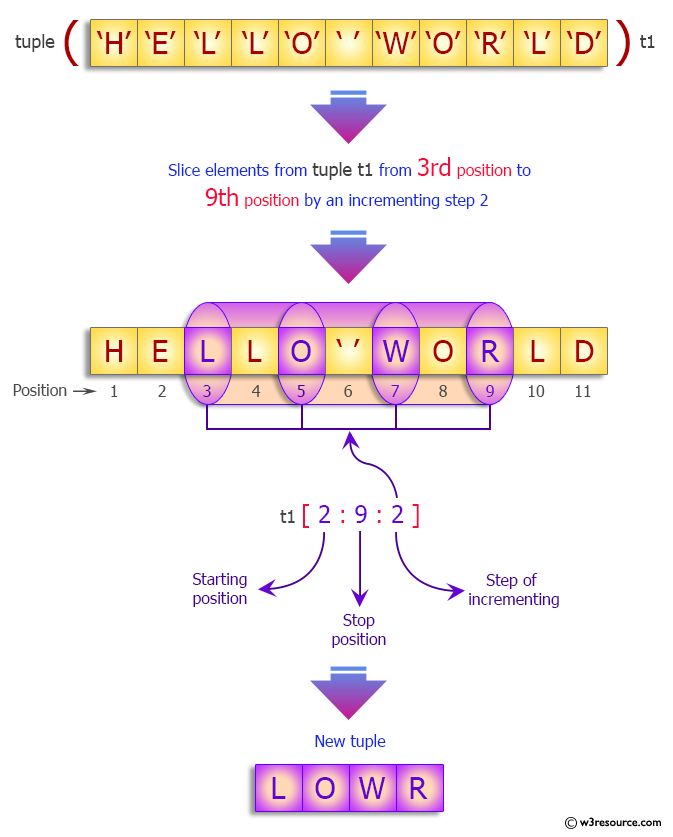
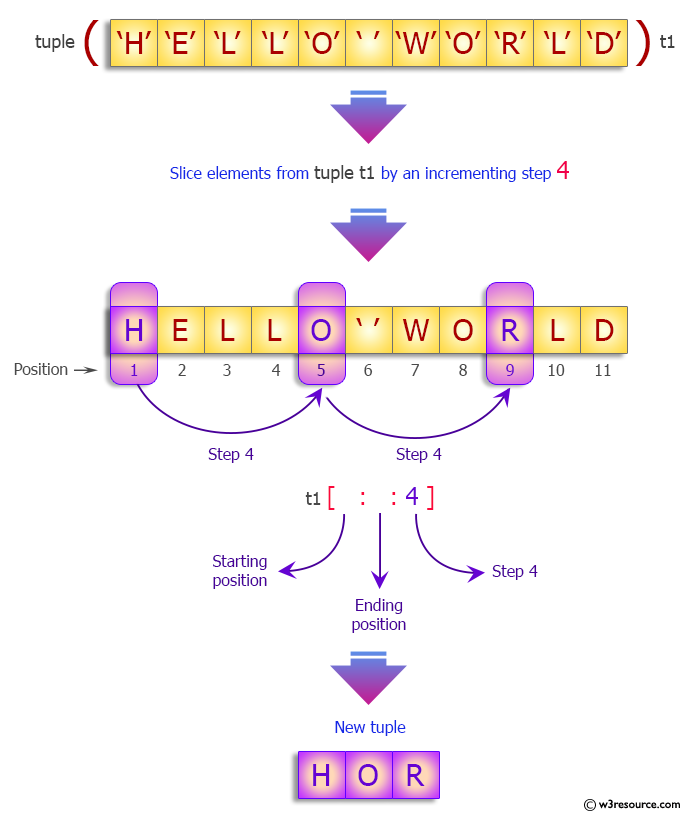
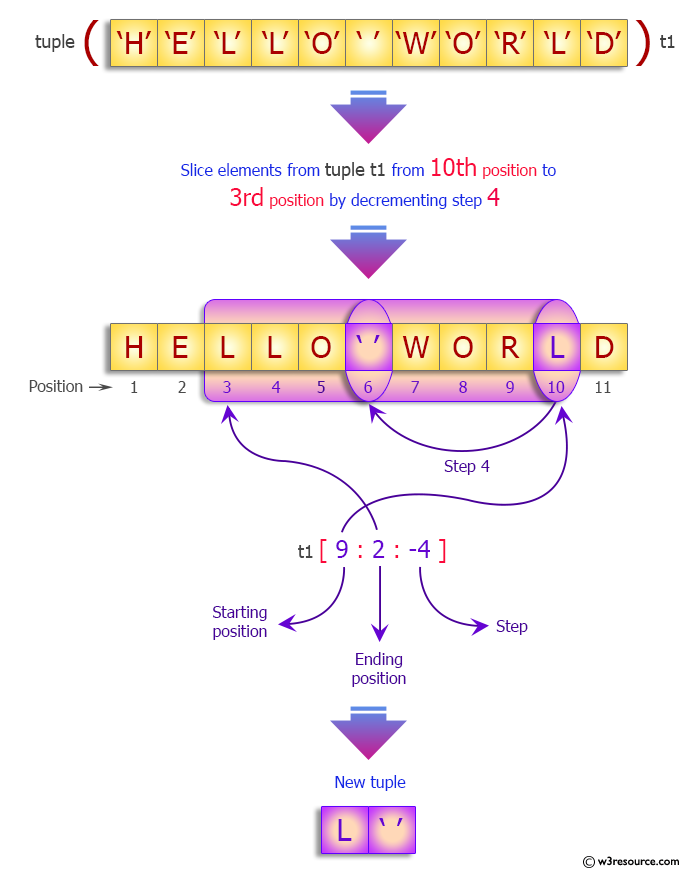
Flowchart:
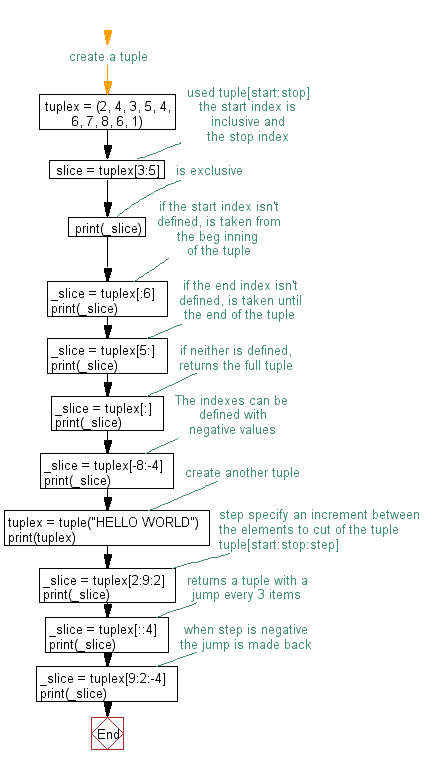
Python Code Editor:
Have another way to solve this solution? Contribute your code (and comments) through Disqus.
Previous: Write a Python program to remove an item from a tuple.
Next: Write a Python program to find the index of an item of a tuple.
What is the difficulty level of this exercise?
Test your Programming skills with w3resource's quiz.
Python: Tips of the Day
Find current directory and file's directory:
To get the full path to the directory a Python file is contained in, write this in that file:
import os dir_path = os.path.dirname(os.path.realpath(__file__))
(Note that the incantation above won't work if you've already used os.chdir() to change your current working directory, since the value of the __file__ constant is relative to the current working directory and is not changed by an os.chdir() call.)
To get the current working directory use
import os cwd = os.getcwd()
Documentation references for the modules, constants and functions used above:
- The os and os.path modules.
- The __file__ constant
- os.path.realpath(path) (returns "the canonical path of the specified filename, eliminating any symbolic links encountered in the path")
- os.path.dirname(path) (returns "the directory name of pathname path")
- os.getcwd() (returns "a string representing the current working directory")
- os.chdir(path) ("change the current working directory to path")
Ref: https://bit.ly/3fy0R6m
- New Content published on w3resource:
- HTML-CSS Practical: Exercises, Practice, Solution
- Java Regular Expression: Exercises, Practice, Solution
- Scala Programming Exercises, Practice, Solution
- Python Itertools exercises
- Python Numpy exercises
- Python GeoPy Package exercises
- Python Pandas exercises
- Python nltk exercises
- Python BeautifulSoup exercises
- Form Template
- Composer - PHP Package Manager
- PHPUnit - PHP Testing
- Laravel - PHP Framework
- Angular - JavaScript Framework
- Vue - JavaScript Framework
- Jest - JavaScript Testing Framework
